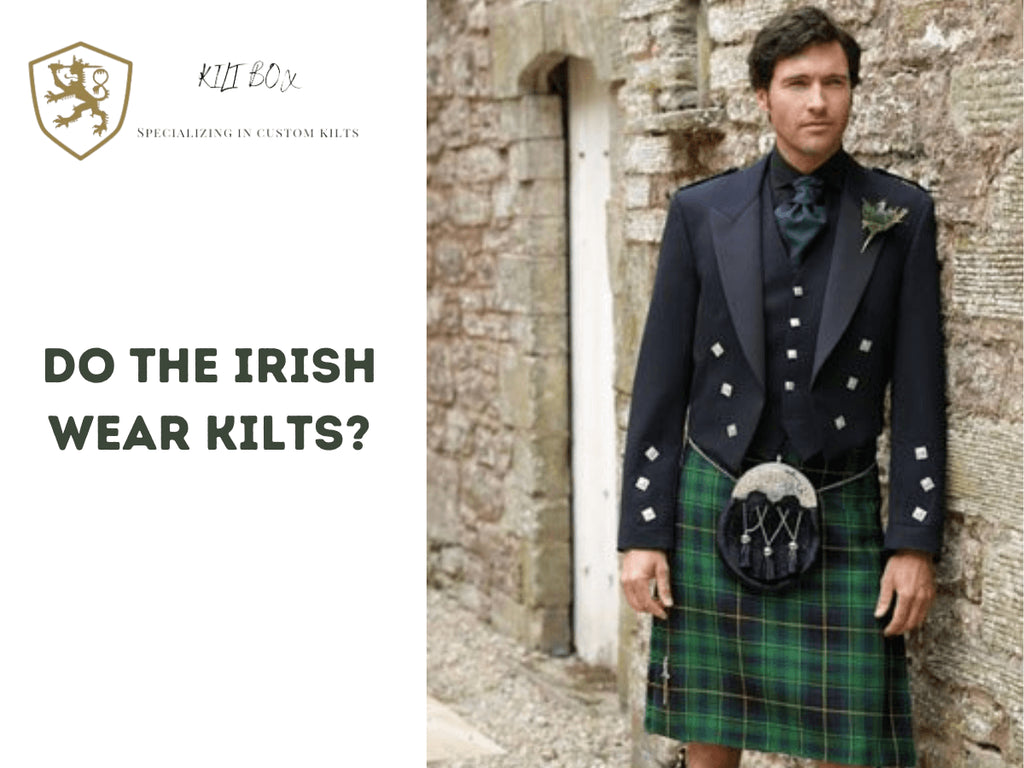DO THE IRISH WEAR KILTS?
Posted by TALAL ARSHAD

The answer to whether Irish people wear kilts is a resounding yes. Kilts have been an important part of Ireland's culture for centuries and are worn as a matter of pride by many. 
History of Kilts in Ireland:
Kilt-wearing became common in Ireland during the mid-1800s, although an aged Irish kilt was dug up in a farmer's field and traced back to 1590. In Ireland, kilts are tied to a person's county or region and there are only a few Irish families with registered kilts, including Murphy, O'Neil, and Fitzpatrick. Ireland has a designated tartan for each of its four provinces: Connacht, Leinster, Munster, and Ulster.
Comparison with Scottish Kilts:
While Scottish kilts can be traced back to the 1600s, it wasn't until the early 1900s that kilts became synonymous with Gaelic heritage. Today, an Irish kilt is similar in style and appearance to a Scottish kilt, with the traditional color for Irish kilts being saffron, a deep yellow color. They are usually embroidered or stamped with a shamrock and were first worn en masse by Irish fighting with the British army in the 1900s.Gaelic Revival and Patrick Pierce:
The era of the Gaelic Revival, led by Patrick Pierce, saw the widespread use of kilts in Ireland. Pierce, an Irish fighter and patriot, used kilts in the dance school he founded, St. Enda's, in 1910, and every student was given a kilt. This era also saw a renewed emphasis on Irish history, culture, and the Gaelic language.Tartans and Colors:
Ireland has several distinct tartans including Tara, the oldest tartan, which is named after the area where ancient Irish chieftains were crowned. Kilts for men are a popular way to showcase this traditional Irish heritage. The Irish Nation and Irish Heritage tartans feature the colors of the Irish flag, set on black, and classic green and silver with black. Today, saffron is still the color of choice, honoring all the Irish men who served in the military, and can often be found on kilts for men.
What's worn underneath:
Like Scotland, about half the men who wear kilts have underwear beneath the plaid, while the other half go commando.Kilts in Modern Ireland:
Today, kilts are worn for a variety of occasions in Ireland, including weddings, music festivals, and political gatherings. They are also worn by traditional Irish dance groups, pipe and drum bands, and other cultural organizations. Many Irish people also wear kilts as a way to connect with their heritage and to show pride in their culture and history.
Kilts and Irish Identity:
Kilts have played an important role in shaping Irish identity. They are a symbol of Gaelic heritage and are closely tied to the culture and history of Ireland. They are also a reminder of the struggles and sacrifices of the Irish people, particularly those who fought for independence.
Kilts in the Irish Tourist Industry:
Kilts have also become a popular item in the Irish tourist industry, with many shops selling kilts, tartan fabric, and other traditional Irish items. Trists visiting Ireland often purchase kilts as a souvenir of their trip, and they have become an iconic symbol of Irish culture.Conclusion:
In conclusion, kilts are an integral part of Irish culture and have a rich history. They are worn as a matter of pride by many Irish people and are a symbol of Gaelic heritage, Irish identity, and the struggles and sacrifices of the Irish people. They are also popular in the Irish tourist industry and have become an iconic symbol of Irish culture.TAGS:
